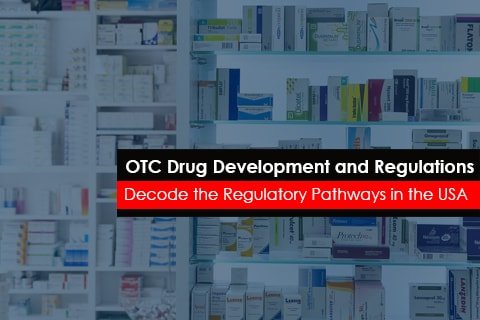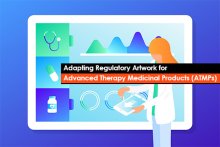With 3,00,000+ Over-the-counter (OTC) products in the USA market alone, it is projected that, so far $105 billion have been saved in doctor visits, diagnostic tests and prescription medications. That makes us wonder, how come they be so cost-effective? Of course, it’s their ability to self-diagnose, self-treat, and self-manage and simple-to-use nature.
The Food, Drug and Cosmetic (FDC) Act, that commenced in the year of 1938 allowed medicinal products, that were marketed before 1938 to continue as is with a low standard of safety evidence. However, the thalamide tragedy of 1962 has some serious repercussions leading to a stricter and streamlined review process for all types of drugs. Shortly after, Kefauver-Harris Amendments were passed to the FDC Act which mandated the prescription drugs to be examined for extensive proof of safety and efficacy. On May 11, 1972, the FDA announced that it would evaluate all the OTC drug products that existed before for their safety and efficacy which led to the emergence of the OTC review process.
The New OTC Review Process
The new OTC review process is a 3-phase public rulemaking process that resulted in establishment of certain standards which are referred to as drug monographs for each OTC therapeutic class. There are over 80 non-prescription (OTC) drug classes like laxatives, antacids, antidiarrheals, cough medications etc. and it’s mandatory for each class to have its own OTC drug monograph. The process was initiated in 1972 and is still in progress as new sponsors approach the agency with more products to be marketed under the OTC category. The monograph is developed in three-phases as listed below.
First Phase: In the first phase, advisory review panel is charged with the duty of reviewing active ingredients in proposed drug to determine if they could be generally recognized as safe and effective (GRASE) so that they can be used in OTC drugs. The panel also reviews the claims recommending appropriate labeling, including therapeutic indications, dosage instructions, and warnings about side effects and preventing misuse. Then the panel’s conclusions are published in Federal Register as advanced notice of proposed rulemaking (ANPR). The panel usually classifies ingredients into three categories.
- Category I: generally recognized as safe and effective for the claimed therapeutic indication
- Category II: not generally recognized as safe and effective or unacceptable indications
- Category III: insufficient data available to permit final classification
Second Phase: After categorization, the FDA reviews the active ingredients in each class of drugs basing on the panel review, public comment, and any new data that is relevant. Then, the agency publishes its conclusions in the Federal Register as a tentative final monograph (TFM).
Third Phase: In the third phase, the final regulations are published in the form of drug monographs, which are like ‘recipe books’ and comprises acceptable ingredients, their dosages, formulations, and labeling. Products that contain ingredients or indications other than those in the monographs must be reviewed through a New Drug Application (NDA).
Amendments can be made to the final monograph either by citizen petition or time and extent application (TEA). If you wish to look for the final monographs consider going through section 300 of the Code of Federal Regulations. They are constantly updated with additions/removal/changes to ingredients and other related information as applicable.
Development and Regulation of OTC Drugs
OTC drugs are developed under two processes namely, OTC drug monograph and New Drug Application (NDA) process. Division of Non-prescription Drug Products (DNDP) in Office of Drug Evaluation is responsible for the development of drugs under these processes. While developing them, all OTC drugs must abide by four common requirements of FDA.
- Standards for safety and efficacy
- Good Manufacturing Practices
- Labeling under 21 CFR 201.66
- Advertising regulations of FTC
Adhering to these prerequisites, how does a OTC drug meet the standards of a drug monograph or NDA process? Read through the individual processes.
OTC Drug Monograph Process
It must be noted that OTC drug monograph process is not a pre-market approval. In this process, the agency identifies specific requirements for the class of a drug product. DNDP reviews the safety and efficacy of the active ingredients in the proposed OTC drug with the help of a scientific personnel. Also, inputs from the medical officer, pharmacologist and/or statistician are taken into consideration for review, if necessary. Although DNDP is the primary reviewer, reviewers from multiple divisions of Office of New Drug (OND) may also be involved in the process. If the product complies with all pertaining regulations and standards of the OTC drug monograph, the manufacturer can proceed for marketing.
What if the product does not conform to the drug monograph? The OTC drug shall proceed for review by the NDA process.
New Drug Application (NDA) Process
Unlike drug monograph, NDA is a market approval process and the approach shall vary from drug to drug. Basing on the approach NDAs can be divided into four application types:
- Rx-to-OTC switch
- Full switch (NDA Supplement)
- Partial switch (New NDA)
- Direct to OTC
- NDA deviation (330.11)
- Generic (ANDA)
The manufacturer willing to market their drug shall approach the DNDP through one of the 4 types of applications. Initiating the process, DNDP oversees the drug development including review and Regulatory action. The agency may seek inputs of specific subject matter review division (SSMRD), if and when needed. After the manufacturer submits NDA, DNDP reviews the consumer studies, post-marketing safety data, OTC labeling, and other Regulatory issues. Aligning with the SSMRD, DNDP also reviews the safety and efficacy of the controlled clinical data. DNDP can also take inputs from clinical pharmacology, statistics, and chemistry as per the need. If the product is found compliant with all the regulations, the agency approves the drug and the manufacturer shall proceed for marketing the OTC drug.
Although the OTC drug review may seem quite simple at initial glance, the Regulatory aspects vary case-wise given the wide range of drug monographs. If the OTC manufacturer must proceed via NDA process the review may become increasingly tough and without the right assistance, Regulatory roadblocks can slow down the process and lead to reworks. Go ahead with confidence with proven Regulatory expert’s consultation. Be compliant ahead of your OTC drug review.





